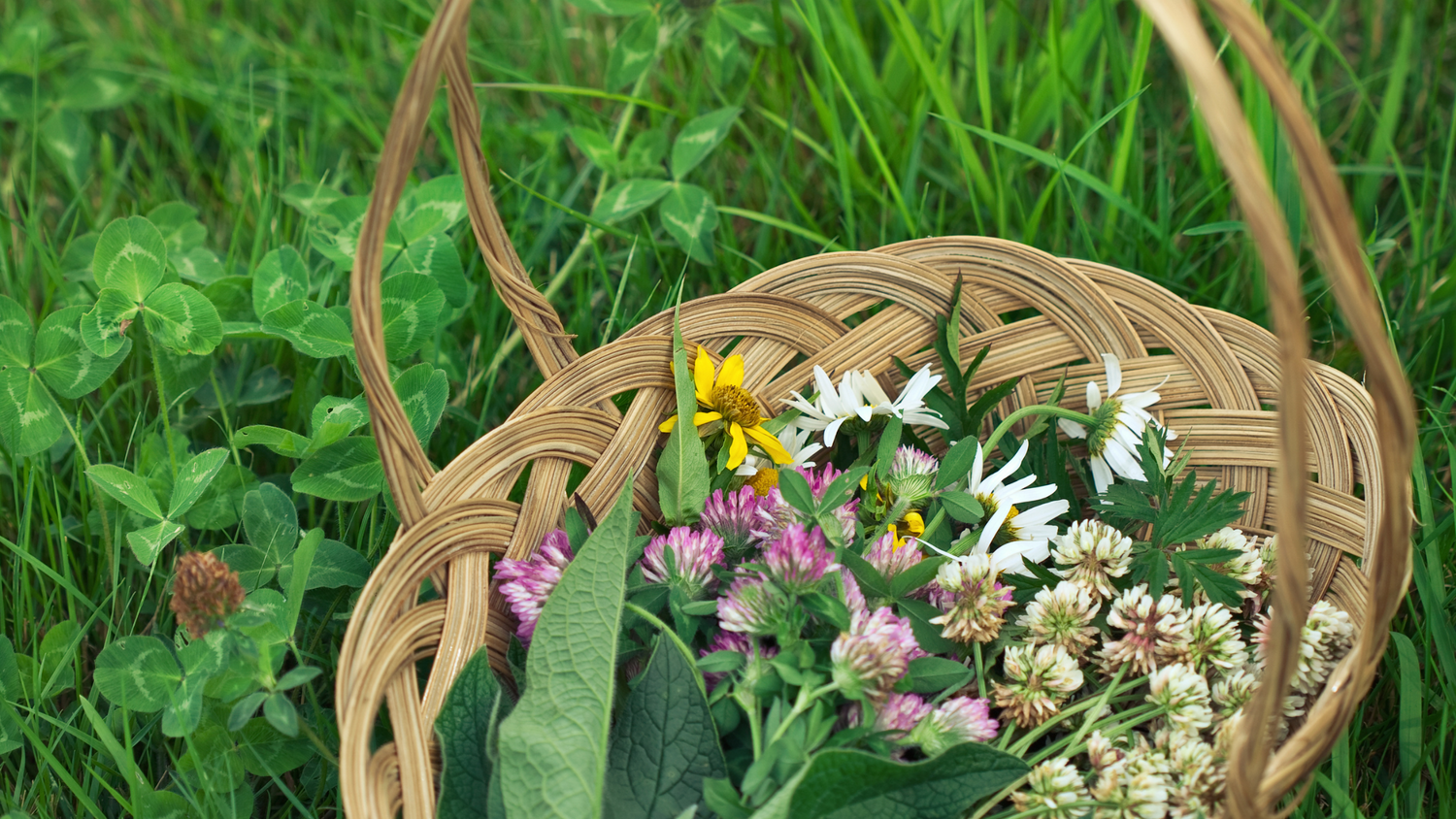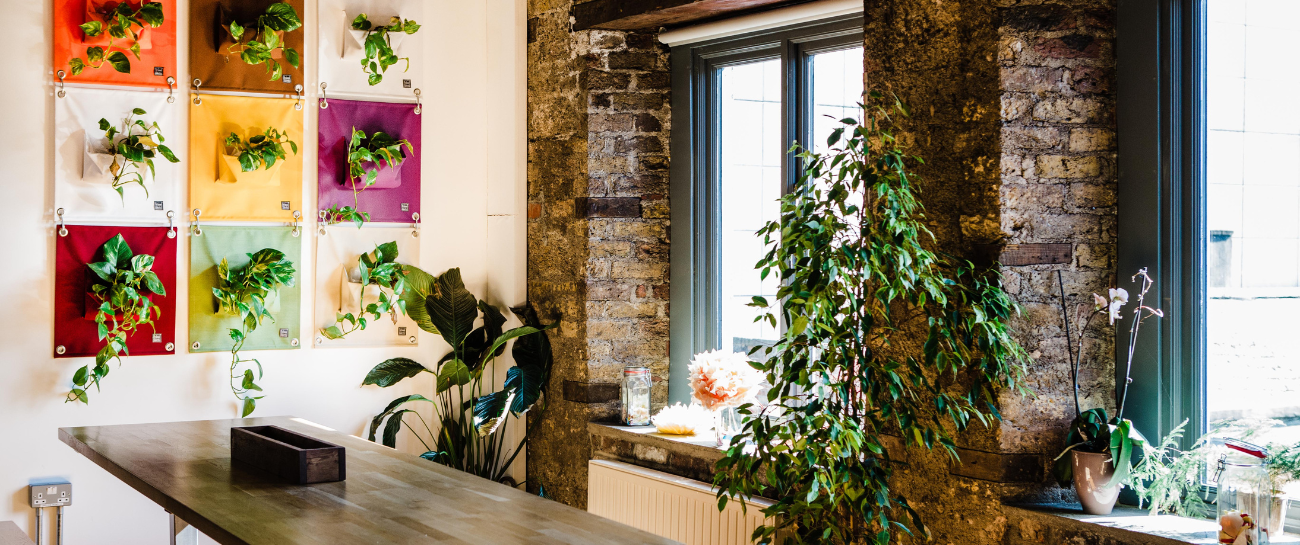A sunny windowsill 🌞 - all you really require to grow most herbs successfully indoors.
But is it really that simple?
Growing herbs indoors is an excellent alternative for those who do not have access to a garden or ample outdoor space. There are so many benefits of growing your own herbs but if we are honest, being able to pick and enjoy them right from your window sill, has to be the most rewarding!
In this article, we share 5 of our favourite herbs and with our tips, the right conditions and a little TLC, we show you how to grow your very own herb garden successfully indoors. All of these herbs can be placed on your balcony or patio from Mid March onward. They will take advantage of our longer Summer days from their original Mediterranean homes and will reward you with abundant leaves for harvesting.
But first, let’s decipher some confusing herb-growing vernacular: perennial, annual and biennial. These three terms are most commonly used to classify plants due to their life cycle and bloom time. Here’s what each means 👇
- Perennial: Perennial plants regrow year after year if given the right growing conditions.
- Annual: Annual plants complete their entire life cycle in a single growing season however, unlike perennial plants, they do not repeat the process the following year.
- Biennial: Biennial plants typically take 2 years to complete their life cycle.
5 Common Herbs & Tips for Growing Them Indoors

🌿 Oregano (Origanum vulgaris)
Hardy perennial herb that returns year after year
Known as one of the most celebrated herbs, no one would consider their pantry complete without oregano.
Native to Eurasia and the Mediterranean, oregano has a long history of use in many cultures. It originated in Greece, where it was believed that the goddess Aphrodite created it as a symbol of joy and was next adopted by the Romans who spread the herb throughout Europe and Northern Africa.
Having an oregano plant as part of your indoor herb garden will serve you well for many seasons. It is considered a relatively low maintenance herb with just a few basic care requirements.
🟤 Soil: Enjoys light, airy, well-drained soil
💧 Water: Water thoroughly only when soil is dry to touch.
🌡️ Temperature: Thrives in average indoor temperatures of around 16°C
☀️ Light: Performs well in partial to full sunlight although flavours intensify when it receives a full day of sunlight.
To obtain the optimum potency of flavour, we recommend harvesting oregano leaves just before the plant flowers. Simply grab the stem about 2/3 down the length of the plant and run your fingers along the stem.
This is one of the few herbs that keeps its flavour after it is dried. To dry oregano:
- Cut off stems and tie in 1-inch bunches with string, leaving a loop for hanging.
- Hang them upside down and allow them to dry naturally in a dry, dark place.
Oregano has many uses perhaps most known for its addition to tasty Mediteranean dish, however, it is also an ancient medicinal plant used to treat gastrointestinal and respiratory problems for centuries.

🌿 Sage (Salvia officinalis)
A hardy perennial herb that will reward you year after year
Sage has a very long history and has been used since ancient times for several purposes, from warding off evil to boosting female fertility!
It originated in the Mediterranean and was noted as being one of the most important herbs of that time period. Sage was also used by Romans to assist in digestion and to treat and soothe ulcers, wounds, and sore throats.
There are many varieties of sage, but perhaps the most widely known is garden sage or Salvia officinalis.
🟤 Soil: Requires well-draining soil preferably in a clay pot.
💧 Water: Sage is a reasonably drought-tolerant herb, and even when the leaves look wilted, a little water perks the entire plant right up. Wait until the soil is dry to give it a thorough watering.
🌡️ Temperature: Thrives in average indoor temperatures of around 16°C. Try to keep your sage away from drafts.
☀️ Light: If you are growing sage indoors, place your pot near a sunny window. You’ll be rewarded with beautiful silver foliage and a delicious aroma.
If you enjoy cooking, sage is a must-have for the herb garden. It is one of the few herbs that, even as its leaves grow larger, the flavour intensifies.
For the most fragrant and intense flavour, we recommend using sage fresh however the leaves can be dried and used as seasoning or for tea. Simply cut 6-8 inch length of stems and tie in bundles. Hang upside-down in a cool, dry location and then store in an air-tight container.

🌿 Rosemary (Rosmarinus officinalis)
Herbaceous perennial that sticks around once treated well
Rosemary is a native Mediterranean plant, hailing from a region of dry, well-drained soil and hot, sunny temps. It is a little tricky to grow indoors however it loves the outdoor Irish climate and has fragrant, evergreen needle-like leaves which intensifies in mid Summer. With multiple culinary and medicinal uses, Rosemary is a must have in your patio or garden.
🟤 Soil: Enjoys well-draining soil and prefers a terracotta pot, which is porous enough to allow moisture to wick from the sides.
💧 Water: Rosemary is called an “upside-down plant” because it likes dry roots and prefers to absorb moisture from the air through its foliage. Water only once the top inch of soil is dry to touch.
🌡️ Temperature: Indoor air is usually drier than outdoor air. Fill a spray bottle with water and mist the foliage once or twice a week.
☀️ Light: Place rosemary in the brightest window you have. If the plant starts to struggle due to lack of light, add a florescent light to the mix.
To harvest your rosemary, simply snip off the stems to use fresh, or hang them in the kitchen to dry out and use later. We recommend harvesting up to one third at any one time, to allow the plant to replace its growth before taking more.
Rosemary has an abundance of uses. In cooking, its leaves and oil are used to add flavour to a range of dishes. Expect your kitchen to smell fresh throughout the cooler seasons thanks to the pungent scent of this herb — it acts as a natural air freshener!

🌿 Savory (Satureja officinalis)
Summer Savory is annual; winter savory is a perennial.
Savory isn’t as popular with homeowners as some of the more commonly used herbs, but it is still a great addition to your indoor herb garden. Over thirty varieties of Savory, with winter and summer Savory being the two most common.
🟤 Soil: Summer Savory prefers rich, well-drained organic soil; winter savory prefers well-drained, sandy soil. Choose from either clay or plastic containers.
💧 Water: Savory requires regular, even watering until the plants are established. Once Savory is established, the soil can be kept on the slightly dry side.
🌡️ Temperature: Happiest in average temperatures away from cold drafts
☀️ Light: Set your Savory in a spot where plants will receive full sunlight a minimum of 8 to 10 hours a day.
Harvest Savory fresh as needed, both leaves and stems and collect leaves for drying just before the flower buds open.
Topically, Savory has astringent and anti-inflammatory properties. Their leaves can be steeped and used as a tea to ease a sore throat or as an antiseptic gargle. This powerful herb can also help enhance appetite, alleviate asthma symptoms and colic, and acts as a remedy for stomach and digestive disorders.

🌿 Thyme (Thymus)
Perennial herb that will stand the test of thyme
Growing thyme inside is one of the easiest indoor herbs to cultivate.
The two most common varieties are Thymus vulgaris (Garden Thyme) and Thymus citriodorus (Lemon Thyme).
🟤 Soil: Plant thyme in well-drained soil. Best grown in a clay planter. If you don’t have a clay pot, make sure you choose one with plenty of drainage holes to allow the plants to dry.
💧 Water: Most thyme varieties are drought-resistant, so only give a thorough watering when the soil is completely dry. A good rule of thumb is it’s better to underwater thyme than to apply too much water
🌡️ Temperature: Enjoys average temperatures but keep away from cold draughts or high heat sources such as radiators as this can dry them out.
☀️ Light: Thyme can tolerate indirect light, which makes it perfect for the kitchen herb garden. The best results will be found when thyme is planted, where it receives six hours of daylight.
To obtain the best and most potent flavour, we recommend harvesting thyme just before the plant flowers. Thyme is both a culinary and aromatic herb and is among one of those herbs, like oregano or sage, which tastes excellent both fresh and dried.
Ready to grow your own herb garden at home?
Shop our DIY Herb Growing Kit here.
If you enjoyed this blog, why not check out some of our similar posts:
- A Guide to Growing Herbs at Home (and Keeping them Alive!)
- 5 Common Indoor Plant Problems and How to Fix Them
- Repottiing your Houseplant: Everything you need to know!





